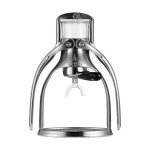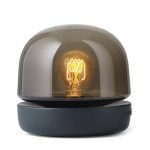Pacifiers
Pacifiers can provide comfort and soothing for babies, but it’s important to consider both the benefits and potential risks. Here are some key points to keep in mind:
Comfort and Soothing: Pacifiers can help calm and soothe babies, providing a sense of security and comfort.
Reduced Risk of Sudden Infant Death Syndrome (SIDS): Research suggests that pacifier use during sleep may reduce the risk of SIDS, particularly when used at nap time and bedtime.
Oral Development: Pacifiers that are designed to mimic the shape and softness of a mother’s breast can be helpful for babies to self-soothe without inhibiting normal oral development.
Middle Ear Infections: Pacifier use may slightly increase the risk of middle ear infections. However, the rates of middle ear infections are generally lowest from birth to around 6 months of age.
Safety and Hygiene: Choose pacifiers that are made of safe, BPA-free materials and are easy to clean. Regularly inspect pacifiers for any signs of wear or damage and replace them as needed.
Age Appropriateness: Consider the age range for which the pacifier is recommended. Some pacifiers are designed for specific age groups to ensure proper fit and functionality.
Parental Supervision: It’s important to use pacifiers under parental supervision and follow safe usage guidelines. Avoid attaching pacifiers to cords or strings around a baby’s neck, as this poses a choking hazard.
Remember, every baby is unique, and what works for one may not work for another. It’s important to consider your baby’s individual needs and consult with healthcare professionals for personalized advice.
What do I need to know about pacifiers?
Pacifiers are a common tool used to soothe babies and young children. They provide comfort for infants, while also helping parents manage their child’s crying or fussiness in public settings. It is important to understand the potential benefits and risks associated with pacifier use before introducing it into your baby’s routine.
The American Academy of Pediatrics recommends that pacifiers be introduced after breastfeeding has been established, usually around 3-4 weeks of age. This gives time for baby to learn how to latch correctly on the breast without confusion from a different type of nipple shape or material found on many pacifiers. When using a pacifier, make sure it is clean by washing with soap and water daily or boiling regularly if possible; this will help reduce any risk from bacteria growing on the surface over time . Additionally, look for BPA-free materials when selecting one as these do not contain toxic chemicals which can leach out during sucking and cause health issues down the road..
Finally ,it is important to note that there may come an age where you need wean your child off their “binky” due behavioral issues such as difficulty sleeping throught he night or speaking delays caused by prolonged use . To help transition them away from depending solely upon its presence try alternative methods like cuddling more often , playing soothing music at bedtime ,or offering extra attention when they seem fussy instead . With proper guidance both parent snd child should have no problem transitioning away form constant reliance upon thier "paci" in no time !
What pacifier to choose?
When it comes to choosing a pacifier for your baby, there are many factors to consider. The most important factor is the safety of the product. It is essential that you choose a pacifier that has been tested and approved by an independent organization such as Consumer Reports or Underwriters Laboratories (UL). Additionally, look for pacifiers made from nontoxic materials such as silicone or latex-free rubber. Finally, make sure the shield size fits properly in your child’s mouth and does not put pressure on their nose when they suckle on it.
The next factor to consider when picking out a pacifier is comfortability; this includes both physical comfort and emotional security for your infant. Look for soft nipples with no sharp edges so they don’t irritate their skin while also providing enough resistance against sucking so they won't swallow too much air while feeding off them during sleep time or nap time sessions at home or away from home . Furthermore, if possible try different shapes of shields until you find one which makes them feel secure; this can be especially helpful if you have adopted an older infant who may already have formed preferences about what type of object he/she prefers in his/her mouth due to past experiences with other products before coming into your care .
Finally , pick out something stylish! There are plenty of cute designs available these days ranging from simple colors like pink and blue , fun cartoon characters , even glow-in -the dark options ! This way not only will make it easy spot amongst all those blankets but also give parents some bragging rights among friends ! In addition there might be special occasions where having unique looking items could really come handy ; think Halloween costumes! All these little details matter since babies tend associate objects with people around them – giving him/her something attractive would definitely help cultivate positive feelings towards caregivers / family members associated with said item .
In conclusion , selecting the right kind of Pacifier requires careful consideration regarding safety standards & quality assurance along side personal preference & style choices depending upon individual needs & wants ; ultimately leading up towards creating happy memories between parent & child alike
How are pacifiers helpful?
Pacifiers are a helpful tool for parents and caregivers of infants. They can be used to help soothe babies, provide comfort during stressful times, reduce the risk of Sudden Infant Death Syndrome (SIDS), and even aid in teething pain relief. Pacifiers have been around for centuries and have been proven to be beneficial when used properly.
When an infant is upset or crying, providing them with a pacifier can often calm them down quickly by satisfying their need to suckle on something familiar. This may also help prevent colic as well as reducing the stress levels felt by both baby and parent alike in such situations. The sucking action helps release hormones like endorphins that act as natural calming agents while helping relieve any discomfort caused by teething pains or gum irritation associated with itchy gums that come along with new teeth growing in..
In addition to being an effective way of soothing your little one’s cries, pacifiers are also thought to reduce the risk of SIDS due its ability create more regular breathing patterns which could potentially alert parents if there were any irregularities present at night time when they would otherwise not be aware without using a monitor specifically designed for this purpose . Although these benefits should always be weighed against potential risks such as dental issues arising from prolonged use , overall pacifier usage has many positives making it worth considering depending on specific circumstances .



































































































